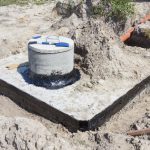As a manufacturer, fabricator, OEM or even a designing and product development company you will work closely with other service providers in the manufacturing of parts and components.
Very few companies in Massachusetts do everything in-house, it is simply too expensive to maintain the equipment, stay abreast of technology and also have the trained technicians, machinists and operators needed to keep everything running.
By turning to specialists in everything from custom extruding and parts process to metal polishing services you can work with the top specialist in any area to product parts to the tolerances and specifications you require.
Surface Preparation
Often different alloys require surface polishing to create a completely smooth surface. This may be to prevent friction and wear in a part or component or it may be to minimize the risk of contaminants or bacterial growth on the surface. This last issue is particularly important in medical devices and implants as well as in the pharmaceutical industry.
To create a smooth surface, one option can be to turn to metal polishing services. This will be completed through a mechanical process that can result in a mirror type of finish or more of a matte finish, depending on the specific alloy and the requirements for the component or part.
In many cases, polishing is seen as a way to prepare the surface prior to additional chemical finishing. Most chemical finishing will not address irregularities in the surface, but rather apply a consistent layer over the existing surface for additional protection from corrosion.
The Process
Polishing is used to actually change or alter the surface of metal. The most common use of metal polishing services is to remove scale or oxidation from the surface. This includes small areas of oxidation that may be invisible to the eye, but will result in higher rates of corrosion in those areas compared to the rest of the surface.
Depending on the specific finish required, polishing may involve several different steps. A coarser polishing process may be used to remove the heavy surface irregularities followed by a finer and finer polish to achieve the smooth, mirror-like surface. There may also be specific polishes used to create the fine grit to slightly abrade the surface and remove the problematic areas on the surface.
Buffing may also be used as a final step in the process to further refine the surface and remove even very minute issues on the surface. The result of both polishing and buffing will be evident when compared to the unfinished parts before processing.





